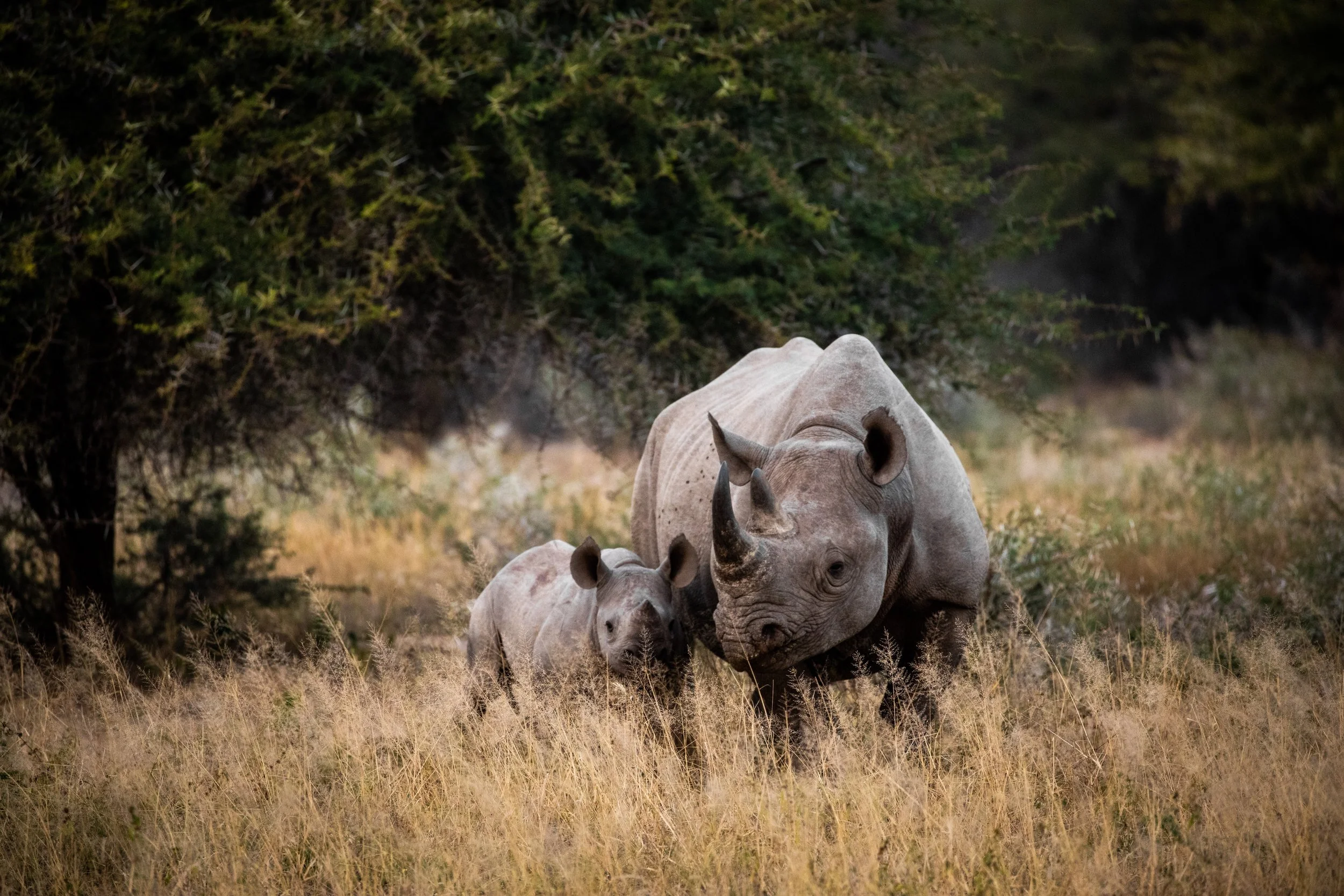An Introduction to the Rhino Poaching Crisis
For the Asian rhino species the biggest threat facing their survival is habitat loss. For the African rhino species the biggest threat facing their survival is poaching.
Poaching of rhino for their horn and elephant for their tusks has been happening for centuries, but with populations of both white and black rhino in such rapid decline, the situation has become dire.
Rhino Poaching in South Africa
South Africa is home to 90% of the world’s rhino population. In the seven years between 2007 and 2014 South Africa saw a 9000% increase in the poaching of rhinos for their horn. This largely happened in and around Kruger National Park, sadly since 2013 the park’s rhino population has declined by 60%. Concerted efforts have been put in place by the South African government, private parties and international NGOs. There has been a slow decline in rhino poaching instances in the last six years but populations of rhino will take decades to recover.
Why Are People Killing Rhinos?
Rhino poaching is largely driven by demand for rhino horn for use across the world, with the largest markets being in China and Viet Nam.
Rhino horn is made from keratin which is the same biological material that build our own hair and nails, it is the same structure that forms horses hooves and cockatoo bills. It is believed that rhino horn has medicinal properties in some cultures. It is used to treat all number of ailments from headaches to vomiting, from gout to cancer. It is commonly used as an aphrodisiac.
The horn is often shaved in to thin pieces and then ground down into a powder. The powder is either snorted or dissolved into boiling water.
The poaching situation has become the crisis that it has because the poaching of rhino has become run by criminal gangs and syndicates. There are huge international operations that are running like militia. Young men from rural and impoverished villages are being paid life changing amounts of money to provide rhino horn to king pins. The criminal gangs now have access to military level weapons and tracking equipment that makes it dangerous and difficult protect the rhinos.
Preventing Poaching
There are hundreds of different initiatives being used to try and call a stop to rhino poaching from all angles.
Some game reserves choose to dehorn their rhino to make the reserve less vulnerable to attack because potential poachers know there is very little horn to be gathered. This is effective but costly both in terms of time and money.
Many reserves and national parks have anti-poaching patrol units that run like military operations, many are done on foot by patrolling rangers, others have canine units who use sniffer dogs to track and protect rhinos and eliminate poachers. Others have equine anti-poaching units who cover protected areas on horseback.
Poaching rhino is illegal in South Africa and many other countries in Southern Africa, the threat of imprisonment or huge fines is not always enough to prevent people from poaching, or being forced into poaching. Sometimes people do not know the law, and in some places the law is not always full enforced meaning that the criminal justice system is not sufficient in preventing poaching alone.
Do You Feel Compelled to Take Action?
Go and subscribe to the MoveMe YouTube channel where we will soon be launching our Can’t Stop Moving Meets Case Scenarios X series.
Can't Stop Moving meets Case Scenario X will feature stories of humans, of animals and of the environment to see how these three threads need to be looked at together to create lasting solutions. The poaching of wildlife is a significant crisis and the first few episodes of Can't Stop Moving meets Case Scenario X will explore this dire situation in more detail with action steps you can take to support those working on the frontlines.

